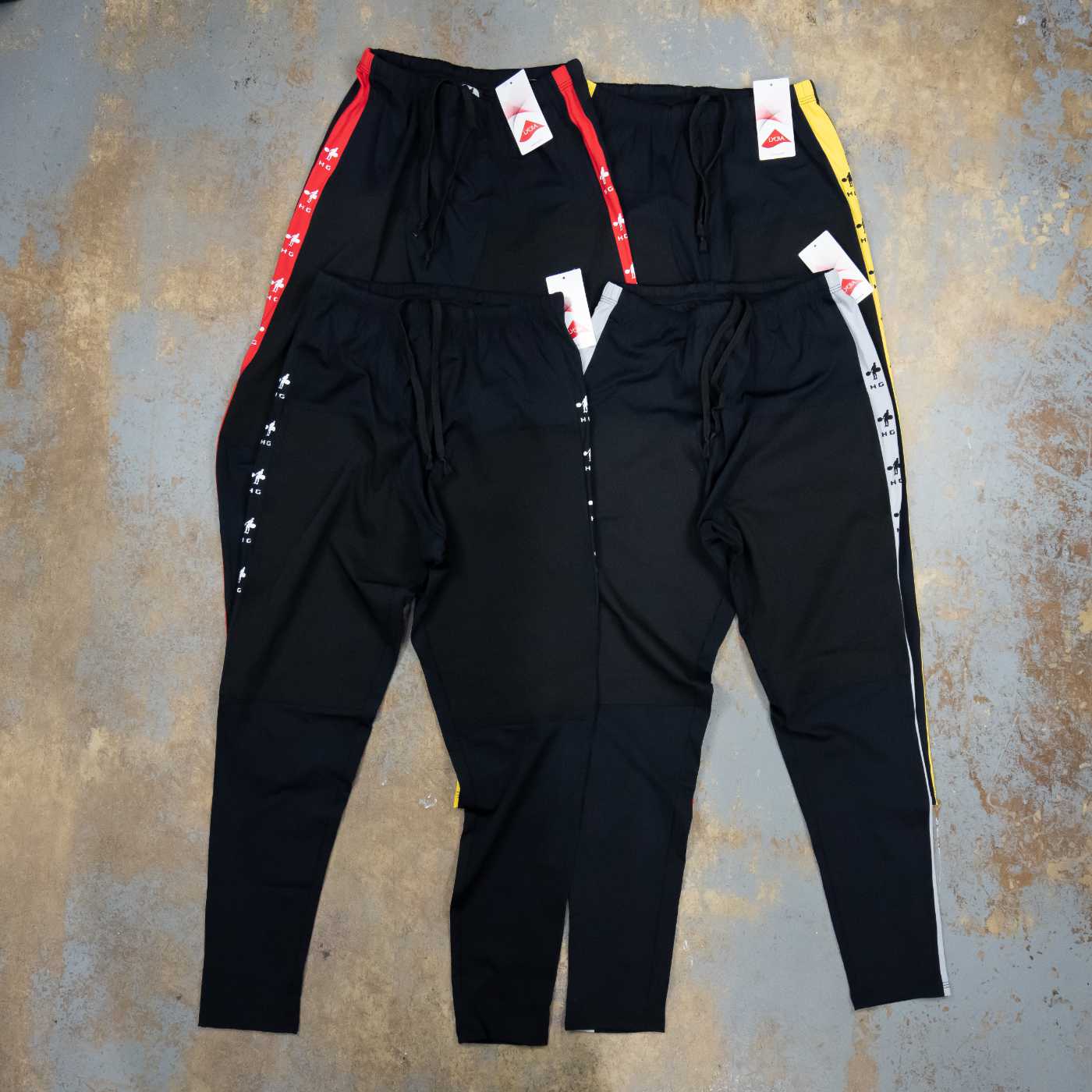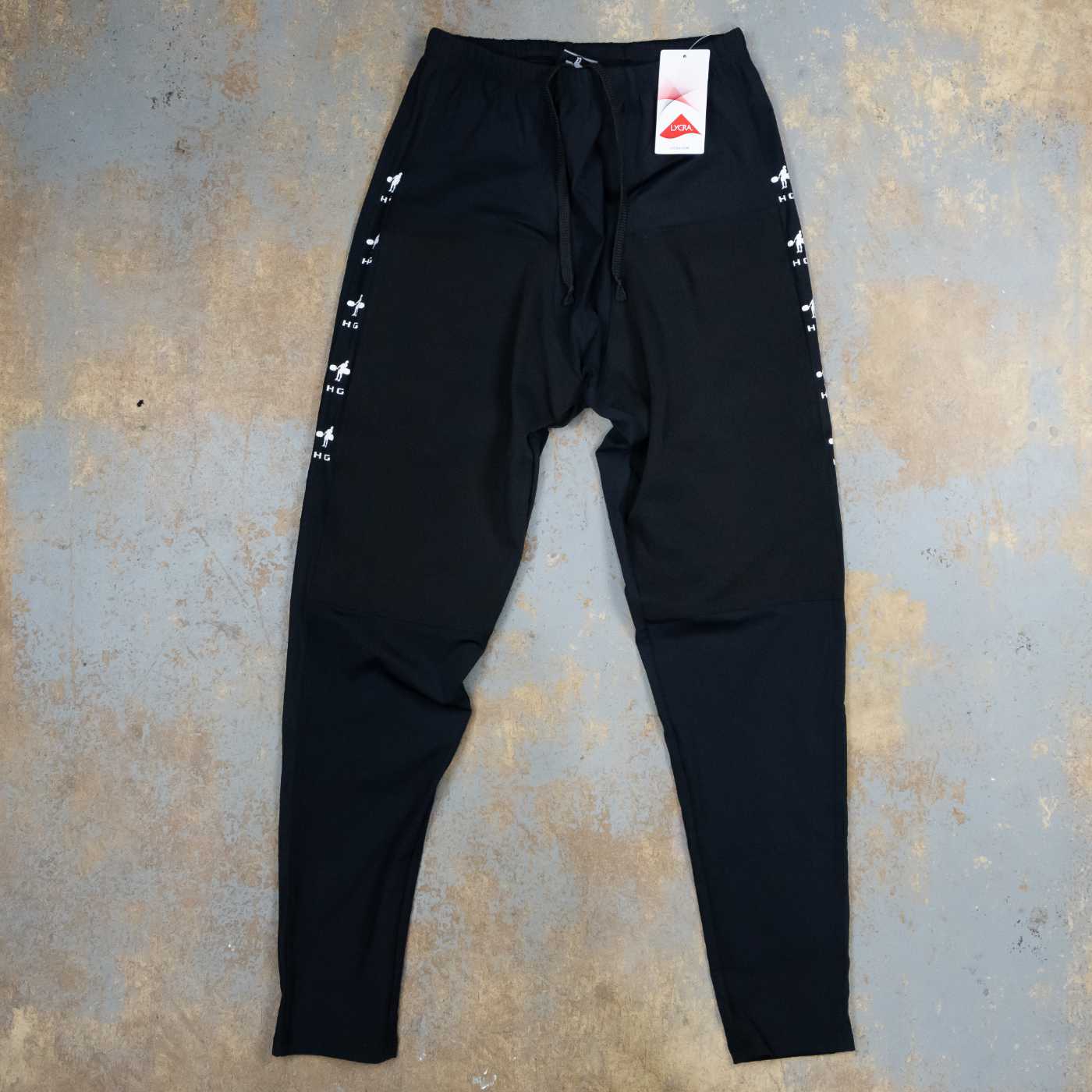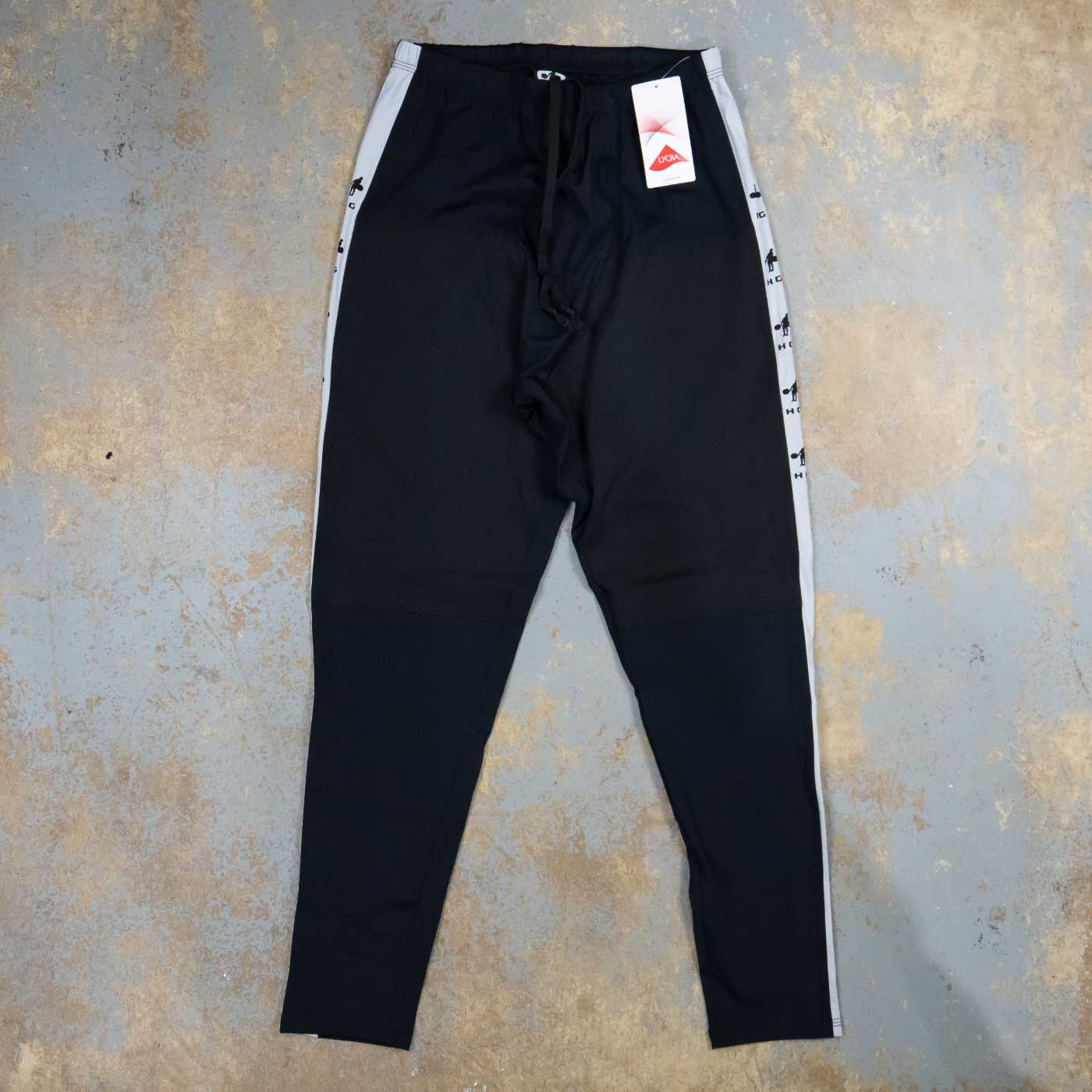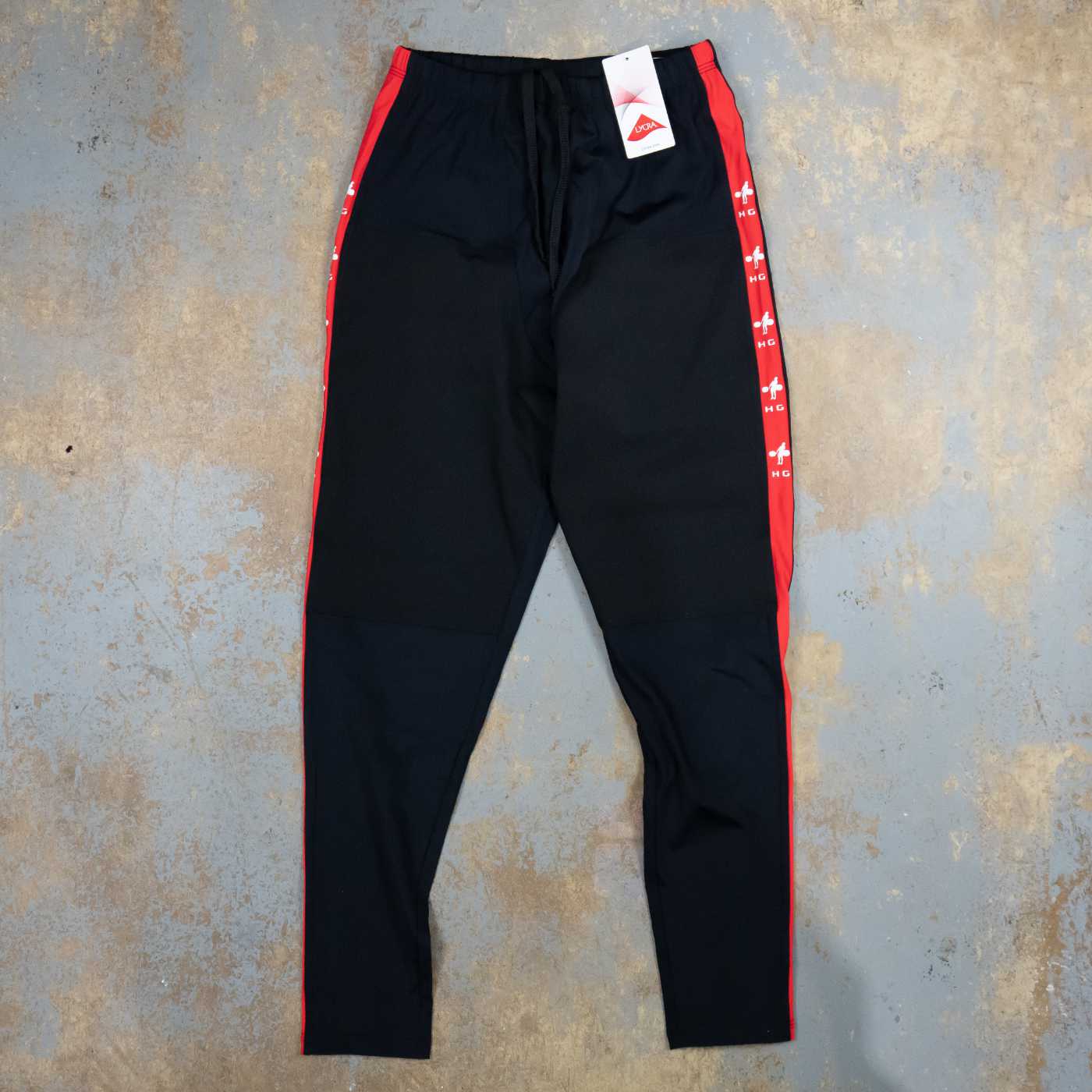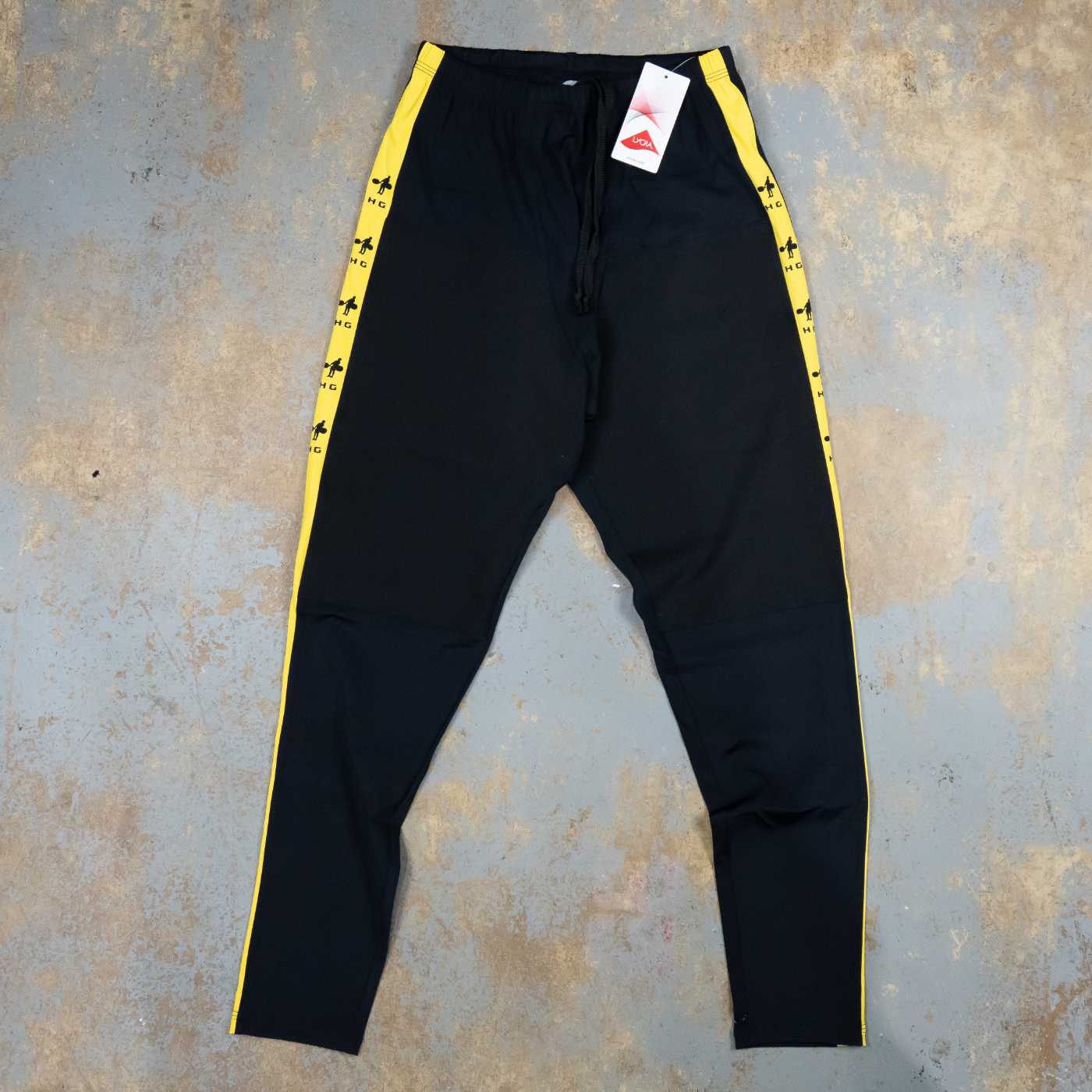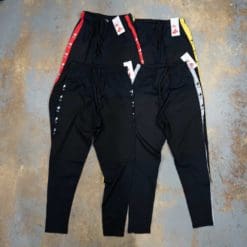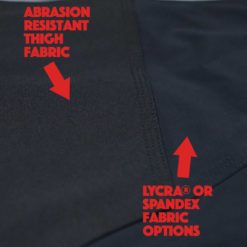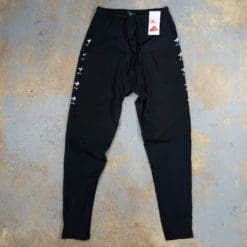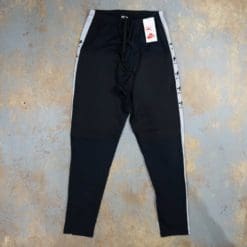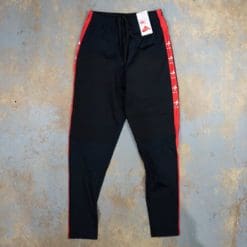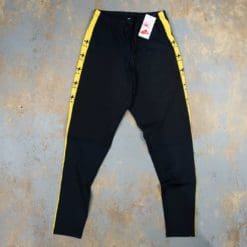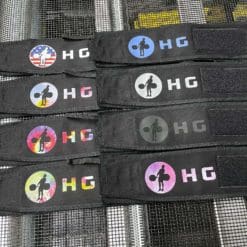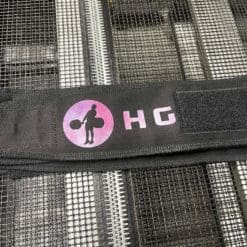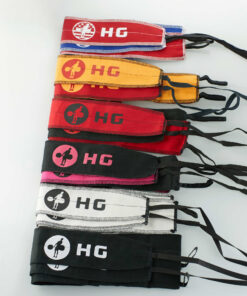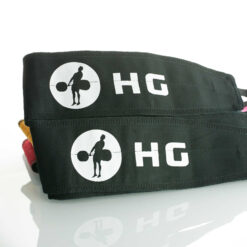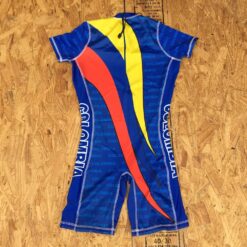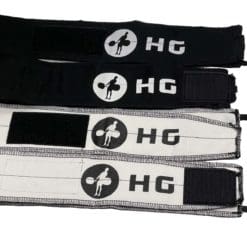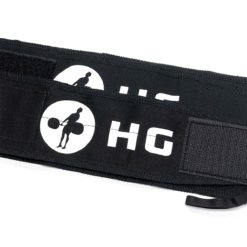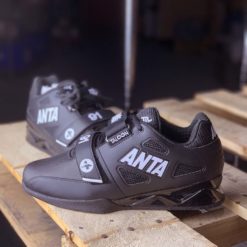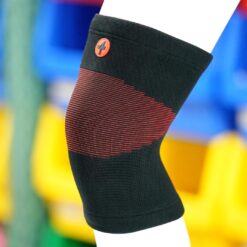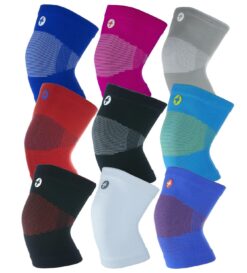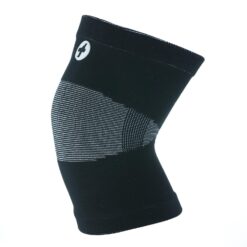- Cannot contact the gateway at this time.
Made from 74% Nylon and 26% LYCRA®. This version is made with LYCRA® on the stretchy panels — a trademarked and branded product. Spandex is the generic name for this type of fabric while LYCRA® was originally developed by DuPont and is produced by The Lycra Company. While generic spandex that we use on the other version is high quality, genuine LYCRA® is a more premium and costly fabric, hence the price differential. Both our spandex and LYCRA® versions use the same abrasion resistant (and less stretchy) fabric on the thighs.
This is an improved version of weightlifting training gear, with the following major improvements:
- The thigh fabric is much more abrasion resistant than before. While no fabric will last forever when being rubbed with sharp bar knurling, the fabric on this new version will last much longer than the Polish training gear thigh fabric. The thigh fabric on this version is more similar in feel to the fabric on the thighs of Adidas or Nike weightlifting singlets.
- We have added a drawstring. The drawstring is sewn in place inside of the back of the shorts so the drawstring can’t come out. We also made the drawstring purposefully longer than typical just in case people size down and the fabric is being stretched out. This may means that people who aren’t wearing them tight may have a long drawstring. However, this is a simple item to trim if you have scissors and a lighter to seal the end.
- The thigh fabric is no longer connected across the front and we’ve added a piece of stretchy fabric in the middle. This allowed us to pick a thigh fabric that is substantially stronger because we no longer needed to pick a fabric that would stretch significantly. The intersection between super abrasion resistant fabric and high stretch fabric is more or less non existent.
- On this version, as we are using LYCRA®, it is an improvement over the prior version, which used generic spandex. However, as LYCRA® is more costly, we decided to carry both a spandex and a LYCRA® version so we could maintain a lower cost version and a more premium and improved version, as far as the stretchy fabric goes. The LYCRA® version has 5 hookgrip logos+HG repeating on the outer thigh area on each of the side panels while the spandex version does not have a logo on the side panels.
- There are a number of other smaller improvements that we made in order to improve comfort and sizing.
For the short version of sizing advice, see the table below:
| Size | Weight (kg) |
|---|---|
| XS | 50-60kg |
| S | 60-75kg |
| M | 70-85kg |
| L | 80-105kg |
| XL | 100-120kg |
| 2XL | 115-135kg |
| 3XL | 130-150kg |
For the long version of sizing advice, here are some additional bits of information:
- The tougher thigh fabric, while great for abrasion resistance, is very different than LYCRA® or spandex with regards to stretchiness. We have gone through at least 10 iterations of sizing and testing and we’ve found what we think is the most optimal compromise to account for the varying levels of fabric stretch in the garment. In order to work around these fabric stretch differences, the size chart is sized to run a bit bigger than usual. This is because, if the stretchy spandex is pulled extremely taut, the thigh fabric may cause some issues with seams and fitment. We found this to be unavoidable if we wanted to maintain some of our many other goals with the gear (for instance, we didn’t want seams in the bar contact areas, for obvious reasons). We have also added more waist rise than would normally be used on a garment like this to avoid excessive glute pulling on the thigh fabric. In other words, some fit compromises were made in order to increase durability with a large piece of fabric with less stretch and, depending on body type, you may have extra fabric in some parts. Therefore, this gear should not be considered “compression” gear. It should be mostly skin tight, of course, but it should not be extremely tight or do anything with regards to blood flow, oxygenation of muscle tissue or anything like what people might expect out of compression gear. If you want gear tight enough to provide compression, this is not the product for you, because you will encounter fitment issues.
- That being said, if you prefer gear to be on the tighter side, we recommend erring on the side of sizing down. In addition, if, say, you have small ankles compared to your bodyweight and you really do not want any extra fabric around your ankles, you should also size down. Just be aware that you will have some extra tightness in the thighs and you’ll likely need to use the drawstring.
- We primarily tested these items with higher level weightlifters (such as people qualifying for USAW Nationals or higher level). If you are new to the sport or do not have the leg/glute sizing of a higher level weightlifter, you probably want to err on the side of sizing down.
- In line with our usual exchange policy, we can do sizing exchanges in the US, but please take extra caution when trying items on to make sure they stay in unwashed/unused like-new condition. Please don’t try gear on when sweaty, you have chalk on your hands, pet hair is around, with lotion on, etc. Any item returned to us for an exchange must be sellable and indistinguishable from a new product.
Hope that helps make a determination on sizing!
| Weight | N/A |
|---|

